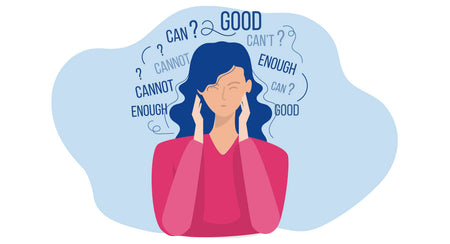7 Ways to Manage the Holiday Rush Before It Manages You
The holidays and much anticipated winter break will soon be upon us. The pace will quicken, distractions will increase, and expectations will grow to have everything completed and perfect. Yet, the number of hours in the day will remain the same.
If we do nothing to anticipate, plan, and manage what lies ahead, we can expect our sense of pressure, stress and frustration to grow. The likelihood of us feeling overwhelmed is high. However, there are several steps we can take to make the season manageable, even enjoyable. Consider these seven “R’s” for remaining sane and in control as you develop plans and decide how you will manage in the days ahead.
Rely on daily and weekly routines.
We can be tempted to loosen or even abandon daily routines in the face of special activities, rehearsals, and other holiday related activities. However, for many students, daily routines are what keep them focused and in control of their emotions and behavior. Students are accustomed to a sequence of activities and knowing what comes next. Varying from routines can invite lack of focus, off task behavior, and even loss of emotional control, especially for young students. Maintaining as much of our daily and weekly routines as practical can serve students and us well.
Revisit behavior expectations.
Even though we spent time and effort to establish expectations early in the year and we have reinforced them as the year has unfolded, now is a good time to revisit our expectations and any expectations we developed with the input and participation of students. We might reinforce the importance of remaining focused despite the excitement and distractions that come with the season. We can also remind students that respect and responsibility are always in season.
Remain focused on learning.
Students are more likely to remain engaged if we continue to present them with content and learning activities that are challenging, engaging, and relevant. We might borrow themes and topics that are relevant to the season, but engaging students in worthwhile learning activities can prevent many of the common challenges associated with holidays and school breaks.
Reorganize and sequence major tasks and responsibilities.
We also need to give attention to our personal and professional workload and manage it strategically. We might establish due dates for major projects a week or two in advance of the final push to the break so that we can finish grading before the final rush overwhelms us. We might plan activities that have students reviewing and providing feedback on each other’s work rather than demanding excessive attention from us. We also need to pay attention to tasks and responsibilities we have apart from work and how we can sequence and balance them to preserve our time, energy, and attention. We need to remember that the level of pressure and stress we feel also has an impact on student attention and behavior. One thing is certain: If we fail to manage activities and responsibilities, they will pile up and start to manage us.
Rally with colleagues.
We do not have to create, plan, and carry out every task and activity on our own. Now is a great time to collaborate with coworkers to design projects, share resources, and lend a hand in other ways. Choosing to share the load can make everyone’s life easier and the work more fun.
Relax and be flexible.
We know that at this time of year not everything will go as planned. There will be distractions, surprises, and interruptions. Expecting perfection is a recipe for frustration and stress. We can let go of what we cannot control, offer forgiveness for others’ lack of planning, and expect that not all communication will be timely and complete. In short: Go with the flow and try to enjoy the ride.
Reserve time for yourself.
We cannot be our best selves and do our best work when we feel exhausted and overwhelmed. Choosing to spend time with family and friends, maintaining an exercise routine, and getting enough sleep can give us the energy and motivation we need to keep going and remain present through all the chaos the holidays and upcoming break bring. We need to take care of ourselves if we hope to be ready to take care of others.
The holiday season is a time of excitement and anticipation. The upcoming winter break promises time to relax and unwind. However, the days and weeks leading up to these anticipated experiences can be filled with unrealistic expectations and pressure. Now is a good time to anticipate, prepare, be ready to manage what lies ahead.















